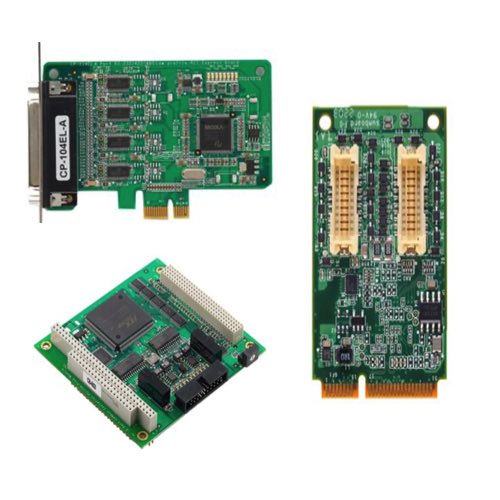Serial Boards

Serial boards are critical components used to expand the serial communication capabilities of a computer or embedded system, particularly in industrial applications where legacy equipment still relies on RS-232, RS-422, or RS-485 protocols. These boards are often installed in PCI or PCIe slots within a host system to provide additional serial ports, enabling communication with a wide range of industrial devices such as PLCs, meters, sensors, barcode scanners, and motor drives. The reliability and configurability of these boards are essential for maintaining stable and efficient data transmission in automation and control environments.
Manufacturers like Moxa offer serial boards with features designed to ensure optimal performance in mission-critical applications. These include high-speed data transmission, surge protection, optical isolation, and support for advanced UARTs that reduce CPU load. Many serial boards come with versatile driver support for major operating systems, including Windows, Linux, and UNIX variants. They often allow flexible port configurations and support multi-drop networking, especially in RS-485 modes, which are commonly used in SCADA systems and distributed control networks.
Basics of Switches, Routers & Hubs
Ethernet hubs, switches and routers connect computers to networks, devices and other computers.
Ethernet hubs are the least intelligent of the three devices. They simply take any message that is received and transmits it to every other device connected to that hub. For example, if CPU 1 on a network wants to send a message to CPU 5, it will send that message through the hub.The hub will then take that message and send it out to every connected device on that hub regardless of the intended target. When CPU 5 receives that message and wants to respond, it will send its response through the hub which sends it to every connected device. Ethernet hubs do not manage any data that is sent and tend to bog down networks. They also do not offer much security for the network. For these reasons, Ethernet hubs are are being replaced with network switches.
Switches transmit data from one device to another on the same network. Unlike a hub, switches use a switch table to learn where data came from and where to send it. Switch tables store Mac addresses and device ports. By storing this data, a switch can operate more efficiently than a hub, greatly reducing the traffic within the network.
Routers transfer data between devices while learning the location of those devices within the network. They are also a junction between two or more networks. An example of this would be a home router where the home network is connected to the Internet. Another example would be when the router connects two or more networks with different business functions. In addition to connecting two or more networks, a router offers important security features that help protect the network.

